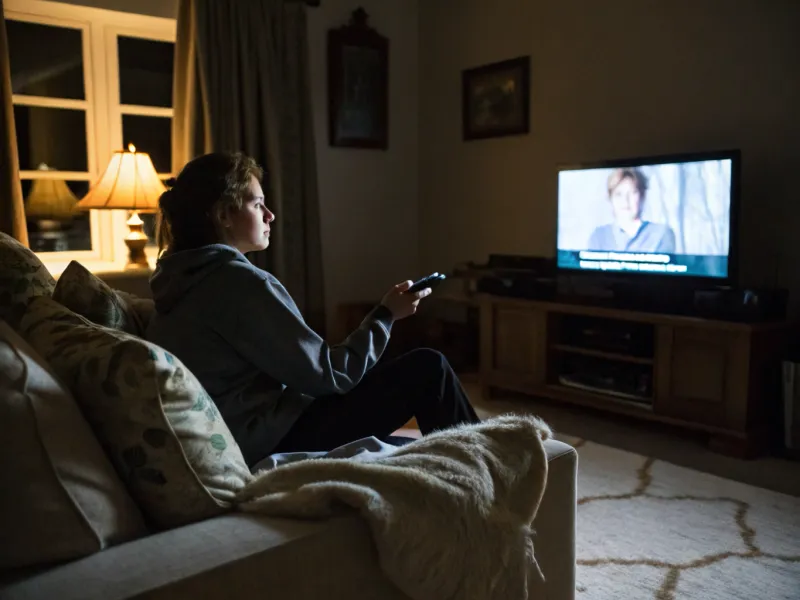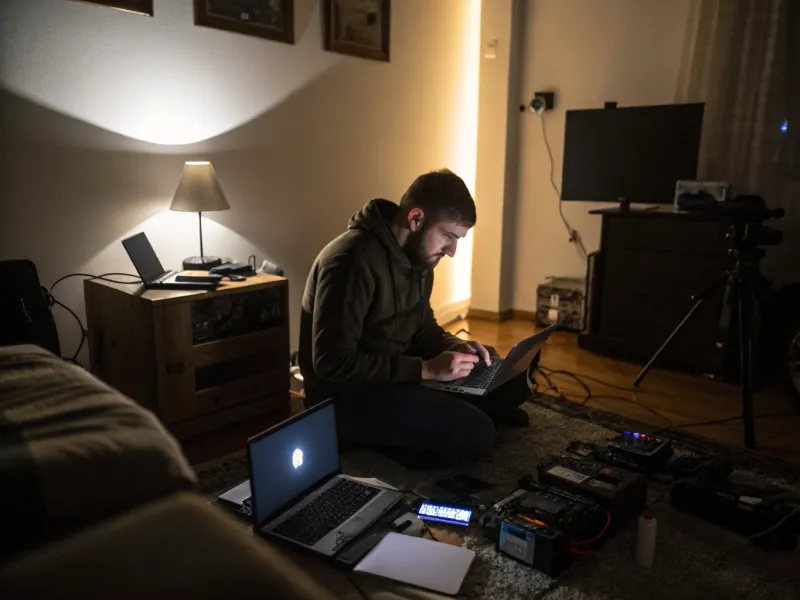26 Signs Of ‘Deep Loneliness’ To Look Out For
You don’t have to be alone to feel lonely. Sometimes, the loneliest people are the ones who seem the most “put together” on the outside.
Deep loneliness is a quiet weight—often invisible but deeply felt. Maybe it’s someone you care about. Maybe it’s you. Either way, understanding what to look for is the first step in offering support—or asking for it.
1. Silent Social Media

You know that feeling when you scroll through your feed, and everyone seems to be living their best life? Yet, there’s this overwhelming sensation of not belonging. It’s like everyone’s at a party you weren’t invited to. This is silent social media—a modern paradox where connection breeds isolation. Even as you comment and like, the sense of loneliness deepens.
For many, social media becomes a place to broadcast happiness, but seldom does it reflect reality. It’s easy to put on a brave face for the world while battling internal disconnect. So, if your heart feels heavy despite the likes, shares, and comments, it’s time to reassess how you engage online.
Perhaps, try unplugging for a day. Reach out to someone in person or over a genuine phone call. Sometimes, hearing a friend’s voice can bridge the gap that digital interaction can’t fill.
2. Craving Human Touch

Isn’t it odd how we crave what we lack? For those experiencing deep loneliness, the absence of human touch can be palpable. A simple hug, a pat on the back, or even a handshake can feel like a distant dream. It’s not about needing constant physical contact, but longing for that occasional reminder that you’re seen and valued.
In today’s fast-paced world, where personal space is often respected, touch can become an overlooked necessity. It’s a powerful connector, cementing bonds and easing the weight of solitude. But when you’re deprived, it can amplify feelings of isolation.
If this resonates, seek out environments where touch is natural—perhaps a dance class or volunteering at an animal shelter. Such experiences can offer the warmth and connection that words alone sometimes can’t convey.
3. The Empty Chair

Ever stared at an empty chair and felt a pang of solitude? It’s as if the chair, meant for companionship, silently mocks the void in your life. This is what I call ‘The Empty Chair’ syndrome. Homes can be filled with things, yet feel achingly devoid of presence.
Sometimes, the absence of a loved one or the routine of shared meals can turn a space into a reminder of what’s missing. The chair stands as a symbol—of unspoken conversations, untold stories, and connections yet to be rekindled.
Consider inviting a friend over or joining a community group. It might just transform that empty chair from a symbol of absence to an invitation for presence. After all, spaces are meant to be shared, and sometimes, the simple act of filling a seat can fill a heart.
4. Mindless TV Watching

You know those nights when you just sit in front of the TV, not really watching but merely passing time? It’s a telltale sign of deep loneliness. Mindless TV watching comes when the silence is too loud and the company of fictional characters becomes a substitute for real interaction.
It’s comforting in the moment, a distraction from the emptiness, but ultimately, it can deepen the sense of isolation. Those sitcom families and drama-filled series can’t replace genuine connection, no matter how engaging they might be.
If you find yourself reaching for the remote a little too often, try switching it up. Pick up a book, call a friend, or take a walk. Sometimes, breaking the monotony can be the first step towards breaking the cycle of loneliness.
5. Conversations with Strangers

There’s a unique comfort in exchanging pleasantries with strangers. For those who feel isolated, these fleeting interactions can provide a momentary escape from solitude. It’s not that the conversation with the barista or a fellow commuter fills the void, but it offers a glimpse of connection.
These brief exchanges can become a lifeline, a reminder that you’re part of a larger world. They may lack depth, but they come without expectations, allowing for genuine, albeit temporary, relief from loneliness.
Reach out to friends or family, and nurture those relationships. A meaningful conversation can be the antidote to loneliness, offering a sense of belonging that transient chats cannot.
6. Emotional Distance

Have you ever been in a room full of people yet felt miles away? Emotional distance often accompanies deep loneliness. You could be surrounded by friends or family, but if you’re not emotionally present, the loneliness lingers.
It’s as though there’s an invisible barrier, a wall that keeps genuine interaction at bay. This detachment can often stem from fear or past hurt, making it difficult to open up and connect. The world moves on, but you feel like you’re watching from the sidelines.
Breaking this emotional distance requires vulnerability—sharing your thoughts and feelings with those around you. It might be challenging, but letting others in can slowly dismantle those walls, bridging the gap between solitude and connection.
7. Longing for the Past

Nostalgia can be a double-edged sword, especially for those grappling with loneliness. Revisiting fond memories can bring comfort, yet it often underscores the present void. Longing for the past can be a sign that you’re not fully engaged with the present.
The past was a time when connections felt more tangible, relationships more vibrant. But dwelling too long on what was can prevent you from creating new memories and forming new bonds.
If you find yourself reminiscing more than living, consider focusing on the present. Engage in activities that excite you, meet new people, and open yourself up to new experiences. The past will always be a part of you, but it doesn’t have to define your current chapter.
8. Shopping as a Distraction

Retail therapy, they call it. Yet, when shopping becomes a means to fill an emotional void, it transitions from a pastime to a sign of loneliness. The thrill of a new purchase is fleeting when used to mask deeper feelings of isolation.
Shopping can momentarily distract from the emptiness, offering a sense of control and newness that life might be lacking. But once the bags are unpacked, the loneliness often returns, leaving you to face the reality that things can’t substitute for meaningful connections.
If shopping has become more of an emotional crutch than a leisurely activity, it might be time to explore other ways to address those feelings. Consider engaging in community activities or volunteering. Sometimes, giving your time to others can fill your heart in ways material items never could.
9. Overeating or Undereating

Food is more than sustenance; it’s an experience often shared. When loneliness creeps in, eating habits can shift dramatically—either turning to food for comfort or losing appetite altogether. Both are signs of deep emotional unrest.
Overeating might provide momentary solace, a way to fill the void or distract from solitude. Conversely, undereating can signify a lack of interest in self-care, an external manifestation of internal emptiness.
Seeking support from friends or professionals can help address these patterns, guiding you back to a balanced relationship with food.
10. Isolation in Crowds

Have you ever felt utterly alone in a bustling crowd? It’s a paradox of loneliness—being surrounded yet feeling isolated. This sensation often signifies a deeper disconnection from those around you.
The noise and activity should feel invigorating, but instead, it amplifies the solitude. You watch life unfold, participating as an outsider rather than a member of the community.
Addressing this requires fostering deeper connections with those in your immediate circle. Begin by reaching out, engaging in conversations, and finding common ground. Building meaningful relationships can transform a sea of strangers into a community of friends.
11. Seeking Constant Noise

Ever find yourself turning on the TV, radio, or any source of noise just to avoid silence? For some, silence can become deafening, underscoring the absence of companionship. The constant hum of noise becomes a companion, albeit an artificial one.
While background sounds can fill the void temporarily, they can’t replace genuine human interaction. This reliance on noise often points to an underlying need for connection.
If silence feels more like an enemy than a peaceful reprieve, consider exploring why. Try engaging in mindfulness practices, and embrace moments of quiet reflection. Ultimately, allowing yourself to sit with the silence can open pathways to deeper self-awareness and connection.
12. Unexplained Fatigue

Feeling constantly tired, even after a full night’s sleep? Often, deep loneliness can manifest physically, and unexplained fatigue is a common symptom. It’s not just the body that grows weary but the spirit too, as the weight of isolation drains energy.
This fatigue can make daily tasks feel monumental, hindering motivation and deepening the cycle of loneliness. It’s a reminder that emotional health is intricately tied to physical well-being.
Seek support from friends, family, or professionals. Reconnecting with others can replenish your energy, turning fatigue into vitality.
13. Avoiding Invitations

Ever decline an invitation, only to regret it later? Avoiding social events can be a sign of deep loneliness. It might stem from a fear of not fitting in or simply feeling too overwhelmed to participate.
Ironically, isolation can reinforce loneliness, creating a cycle that’s hard to break. You want connection, yet the thought of socializing feels daunting, leaving you caught in between.
If invitations have become more of a burden than a joy, consider taking small steps towards participation. Start by attending gatherings with trusted friends or joining smaller groups. Over time, these interactions can reignite your social spark, making the prospect of connection less intimidating.
14. Lack of Interest in Hobbies

Remember the hobbies that used to bring joy and excitement? When loneliness sets in, even the most beloved activities can lose their charm. It’s as if the color has faded from things that once made you feel alive.
This lack of interest often reflects a deeper emotional state, where motivation dwindles and the zest for life dims. Hobbies, once a source of connection and creativity, become reminders of solitude.
Rekindling interest in hobbies requires patience and self-compassion. Start small, revisiting activities you once loved. And consider sharing these experiences with others, transforming solitary pursuits into shared joy.
15. Frequent Crying Spells

Do tears come unbidden, sometimes without an apparent cause? Frequent crying spells can be a symptom of loneliness, where the emotional burden becomes too heavy to bear silently.
Crying offers relief, a way to process and release pent-up emotions. Yet, when it becomes frequent, it suggests a deeper issue at play. The isolation felt is echoed in the tears shed, a plea for connection and understanding.
If you find yourself crying often, consider reaching out for support. Friends, family, or mental health professionals can offer a listening ear, helping to ease the emotional load and guide you back to a place of balance.
16. Increased Sensitivity to Rejection

Rejection stings, even more for those grappling with loneliness. Increased sensitivity to perceived slights or rejections can be a sign of deep emotional vulnerability. It’s not just about the specific instance but a broader feeling of being unwanted.
This heightened sensitivity can lead to withdrawing even further, avoiding social situations for fear of being hurt. It creates a self-fulfilling prophecy, where the fear of rejection leads to more isolation, deepening loneliness.
Seek environments where you’re accepted and appreciated. Building confidence in these safe spaces can help buffer against the sting of occasional rejections.
17. Overanalyzing Social Interactions

Ever replay a conversation over and over in your head, analyzing every word and gesture? This overanalyzing of social interactions is a sign of loneliness, where the longing for connection is overshadowed by fear of imperfection.
It becomes a mental loop, questioning if you said the right thing or if you were perceived well. This constant analysis can deter you from future interactions, fearing negative outcomes.
To break this cycle, practice self-compassion and remind yourself that everyone makes mistakes. Focus on the present, and remember that genuine connections are built on authenticity, not perfection.
18. Compulsive Browsing

The internet offers endless possibilities, yet compulsive browsing can become a refuge for those feeling lonely. It’s a way to fill time without addressing the underlying need for human interaction.
Scrolling through news feeds, forums, or videos can feel comforting, but it often deepens isolation, creating a virtual wall between you and the world. The lure of the digital realm is strong, but it can’t replace real-world connections.
If you find yourself caught in this cycle, set boundaries for your online time. Consider engaging in offline activities that encourage social interaction, fostering connections that resonate beyond the screen.
19. Reluctance to Make Future Plans

Planning for the future can feel daunting when you’re gripped by loneliness. A reluctance to make future plans often stems from uncertainty about having someone to share those moments with.
This hesitation can prevent you from seizing opportunities, leaving you stuck in a cycle of inactivity. It reinforces the loneliness, as the thought of facing future events alone becomes overwhelming.
To combat this, start with small, manageable plans. Reach out to others, and invite them to join you. Building a future with shared experiences can transform reluctance into anticipation, fostering connection and hope.
20. Feeling Unseen and Unheard

Ever feel invisible, as if your presence goes unnoticed? Feeling unseen and unheard is a core aspect of deep loneliness. Even in a crowd, there’s a sense of being overlooked, as if your words and actions hold no weight.
This invisibility can erode self-esteem and deepen the sense of isolation. It might feel like you’re screaming into the void, yearning for acknowledgment and connection that never comes.
If this resonates, try asserting yourself in small ways. Speak up, share your thoughts, and engage with others. Building confidence in expressing yourself can help bridge the gap between feeling invisible and being heard.
21. Collecting Unnecessary Items

There’s a certain irony in collecting things when what you truly crave is connection. For some, accumulating unnecessary items becomes a way to fill the emotional void of loneliness. It’s a sign that companionship is being replaced with material goods.
While there’s comfort in owning things, they can’t replace the warmth of human relationships. The clutter becomes a physical manifestation of emotional clutter, obscuring the path to meaningful connections.
Letting go of unnecessary items can create space for new connections to flourish, opening avenues for genuine companionship.
22. Disrupted Sleep Patterns

Struggling with sleep can be a telltale sign of deep loneliness. Disrupted sleep patterns, whether insomnia or excessive sleeping, reflect an unsettled mind and heart.
The quiet of night can amplify feelings of isolation, making it difficult to find rest. Sleep, a refuge for many, becomes elusive, leaving you weary and disconnected.
Establishing a routine, seeking support, and addressing loneliness at its core can guide you back to restful nights and rejuvenated days.
23. Self-Doubt and Insecurity

Loneliness can often manifest as self-doubt and insecurity. When you’re isolated, it’s easy to question your worth, feeling like you’re not enough or undeserving of connection. These thoughts can become a barrier, preventing you from reaching out and forming meaningful relationships.
This internal struggle is a reflection of the loneliness you feel, a sign that you’re longing for validation and acceptance. It can be a vicious cycle, where doubt fuels isolation, and isolation fuels doubt.
To overcome this, focus on self-care and self-compassion. Surround yourself with supportive people who appreciate you for who you are. Building confidence in your unique qualities can help dismantle the barriers of self-doubt, opening the door to connection.
24. Compulsive Cleaning

There’s something about cleaning that feels cathartic, a sense of control in an otherwise chaotic world. But when cleaning becomes compulsive, it can signify deeper loneliness. The act of scrubbing and organizing becomes a distraction from the emotional clutter.
It’s not just about maintaining a tidy space but an attempt to create order within oneself. Yet, no amount of cleaning can address the root of loneliness, and the spotless surroundings often mask a heart that’s still searching.
If you find yourself cleaning compulsively, take a step back and assess your emotional landscape. Seek support from friends or professionals, and focus on cleaning the emotional clutter rather than just the physical. Connection, not organization, is the key to healing.
25. Reluctance to Leave Home

The comfort of home can become a cage when loneliness takes hold. The reluctance to leave home is a sign that isolation has become safer than the unknowns of the outside world. It’s a retreat, a place where vulnerability is minimized but connection is also scarce.
This reluctance can lead to missed opportunities and reinforce the cycle of loneliness. The world outside holds potential for connection, yet the fear of stepping into it becomes overwhelming.
Engage in activities that draw you out, whether a walk in the park or a visit to a local café. Gradually, the outside world can transform from a source of anxiety to a place of connection and opportunity.
26. Feeling Trapped in Routine

Routine can be comforting, but when loneliness sets in, it can feel like a trap. The monotony becomes a reminder of the absence of spontaneity and connection. Days blend into each other, and the predictability of routine underscores the solitude.
This sense of being trapped can stifle creativity and hinder the pursuit of new experiences. It’s as if life is on autopilot, with little room for growth or change.
Breaking free from this requires intention. Introduce small changes to your routine, explore new activities, and seek opportunities for connection. Shaking up the monotony can reignite passion and foster meaningful relationships.







